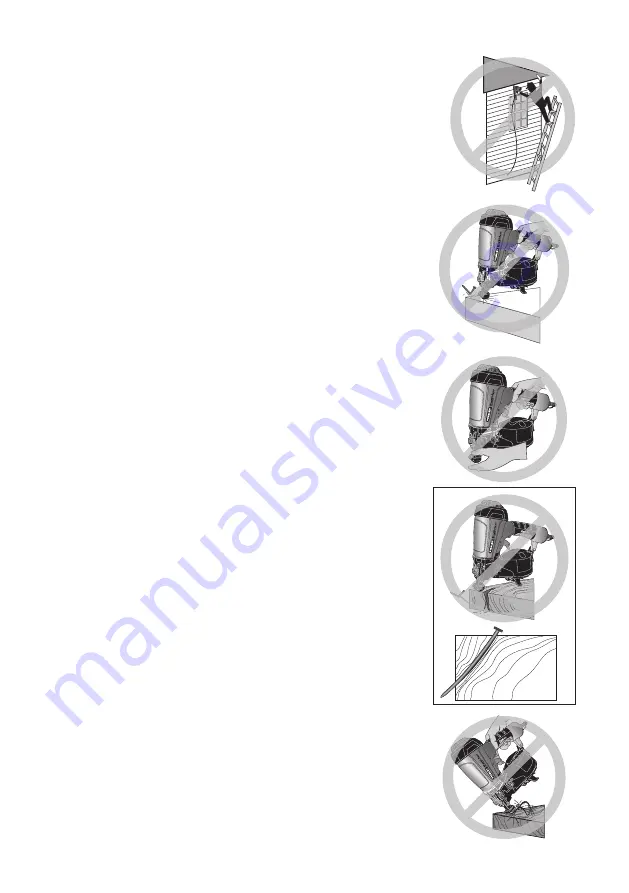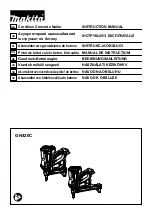
4 - ENG
• Do not point the tool at co-workers or yourself
at any time. No horseplay!
Work safe! Respect the
tool as a working implement. (Fig. J)
• Keep bystanders, children, and visitors away
while operating a power tool. Distractions can
cause you to lose control.
When tool is not in use,
it should be locked in a safe place, out of the reach of
children.
• Remove finger from trigger when not driving
fasteners.
• Never carry tool with finger on trigger. Using
the trigger lock-off will prevent accidental
discharge.
Accidental discharge could result.
• Do not overreach. Maintain proper footing and
balance at all times.
Loss of balance may cause per-
sonal injury. (Fig. K)
• Make sure hose is free of obstructions or snags.
Entangled or snarled hoses can cause loss of
balance or footing.
• Use the tool only for its intended use. Do
not discharge fasteners into open air, concrete,
stone, extremely hard woods, knots or any
material too hard for the fastener to penetrate.
Do not use the body of the tool or top cap as a
hammer. Discharged fasteners may follow unexpected
path and cause injury. (Fig. L)
• Always keep fingers clear of contact trip to
prevent injury from inadvertent release of nails.
(Fig.
M)
• Refer to the
Maintenance
and
Repairs
sections
for detailed information on the proper mainte-
nance of the tool.
• Always operate the tool in a clean, lighted area.
Be sure the work surface is clear of any debris
and be careful not to lose footing when working
in elevated environments such as rooftops.
• Do not drive fasteners near edge of material.
The workpiece may split causing the fastener to
ricochet, injuring you or a co-worker.
Be aware
that the nail may follow the grain of the wood (shiner),
causing it to protrude unexpectedly from the side of
the work material. Drive the nail perpendicular to the
grain to reduce risk of injury. (Fig. N)
• Do not drive nails onto the heads of other
fasteners or with the tool at too steep an
angle. Personal injury from strong recoil, jammed
fasteners, or ricocheted nails may result.
(Fig. O)
• Be aware of material thickness when using the
nailer. A protruding nail may cause injury.
Fig. K
Fig. L
Fig. M
Fig. N
Fig. O

































